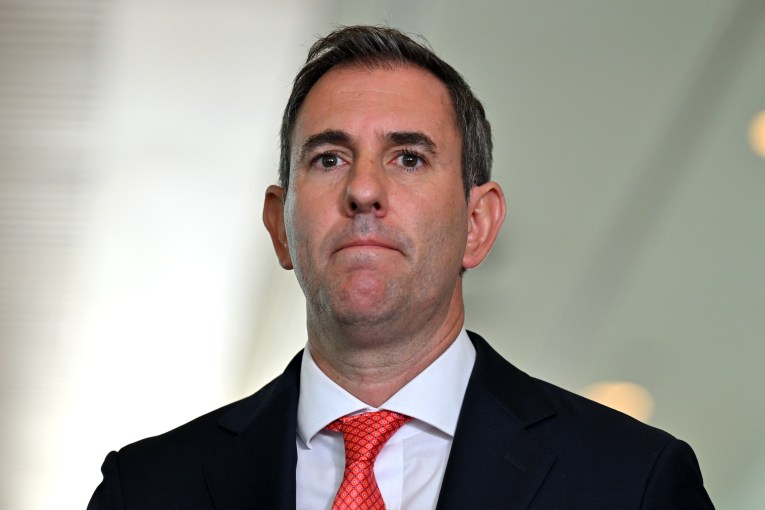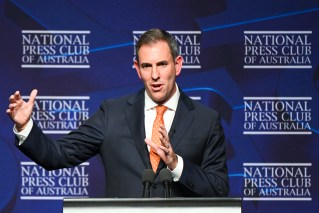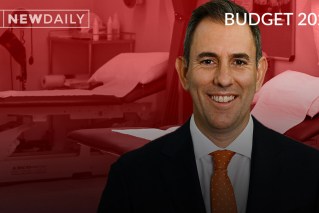Treasury warns JobMaker could encourage firms to lay off older workers


Treasury documents show government stimulus encourages employers to replace older employees with younger workers. Photo: Getty
Internal Treasury documents have confirmed a federal government policy provides a financial incentive for businesses to replace older full-time employees with younger part-time workers.
Treasury documents obtained by the ABC via freedom of information requests reveal employers could sack a full-time employee earning $75,000 a year and replace them with three part-time workers earning between $27,500 and $30,000 a year at no additional cost.
This is because the taxpayer-funded JobMaker hiring credit, which pays employers $200 a week for hiring unemployed Australians aged 16 to 29 and $100 a week for jobless 30 to 35-year-olds, would cancel out the extra wages paid by the employers.
The loophole enables businesses to increase the total number of hours worked by their staff without increasing their labour costs, and was first flagged by community groups immediately after the federal budget.
Treasury addresses the concern in the documents released under freedom of information.
Under the headline Is there an incentive to lay off an older worker and hire several new ones?, Treasury says the JobMaker hiring credit “does not create an incentive for an employer to replace an older worker with several new part-time workers”.
But a table included in the Treasury documents directly contradicts that point.
It shows that an employer could replace a full-time worker (40 hours a week) on $75,000 a year with three part-time workers (20 hours a week) earning between $22,500 and $30,000 a year without incurring additional costs.
If they replaced the full-time worker with three part-timers earning $22,500 a year, they would save $7500 a year on wages but would receive no hiring credit.
This is because employers are only eligible for the JobMaker subsidy if they can demonstrate an increase in their wage bill and employee head count.
Likewise, if they replaced the full-time worker with three part-timers earning $25,000, they would receive no hiring credit. And they would also save no money on wages.
But the incentive to replace one full-time employee with three young part-timers kicks in at annual salaries of $27,500 to $30,000.
This is because an employer could sack a full-time worker on $75,000 a year and replace them with three younger part-timers earning between $27,500 and $30,000 a year at no additional cost.
Under both scenarios, the employers would be eligible for the JobMaker hiring credit – the amount of which is limited to the increase in payroll or the total amount of credit available, whichever is lower – as they could demonstrate an increase in their wage bill and employee head count.
In the former example they would receive $7500 in JobMaker hiring credits and in the latter scenario they would receive $15,000. And in both cases their staff would be working more hours.
Tweet from @JEChalmers
When he announced the scheme in October, Treasurer Josh Frydenberg said JobMaker would “support” roughly 450,000 jobs for young people.
But the head of Treasury’s JobKeeper division, Philippa Brown, later conceded that the scheme would only create 45,000 jobs – meaning each job created would cost the taxpayer $89,000.
- Read the Treasury documents here
Treasury was warned in October
Public policy think tank Per Capita was one of many labour market analysts to warn Treasury in October that JobMaker would encourage firms to replace older employees with younger workers.
The think tank’s director, Emma Dawson, told The New Daily the Treasury documents were unsurprising and showed the government passed the legislation knowing that it could displace older workers.
Ms Dawson said the program entrenched casual and insecure work, encouraging businesses to hire part-time workers at a time when insufficient full-time work opportunities were already suppressing wages growth.
“Either the government is not at all concerned about the casualisation of work and the insecurity of the labour market, or they are comfortable with that and see that as a positive,” she said.
“They’re much more concerned, as we said at the time, with reducing the headline unemployment rate, particularly for young people, than they are with the real outcomes for people’s lives.”

Community groups criticised the JobMaker scheme back in October. Photo: AAP
More ambitious policies needed
Ms Dawson said the federal government was looking for easy wins and focusing on the quantity rather than quality of the jobs created, so they could tell voters before the next federal election that they had successfully reduced the unemployment rate.
Among other things, policy makers could invest more heavily in apprenticeships and public-sector graduate positions while introducing incentives that encourage businesses to invest in on-the-work training, she said.
“What we need is a concerted government effort at direct job creation through the public sector, [plus] active, smart government industry policy that incentivises business to invest.”

The casualisation of the workforce is weighing down wages growth. Photo: Getty
The JobMaker hiring credit pays businesses to double down on existing strategies rather than encouraging them to pick up new habits, according to Centre for Future Work senior economist Alison Pennington.
Ms Pennington said businesses had been breaking down full-time jobs into lower-paid, insecure part-time jobs for decades in a bid to reduce their wage bills.
She told The New Daily 62 per cent of jobs created in Australia in the second half of last year were casual jobs.
“This massive expansion in insecure work will undermine wages growth, which is at historic lows, and it will also undermine our recovery by stifling consumer spending,” she said.
“What [the government] has done is provide a tool for employers to … displace more expensive workers with state-subsidised, insecure young workers in order to cut their wage bills.”









